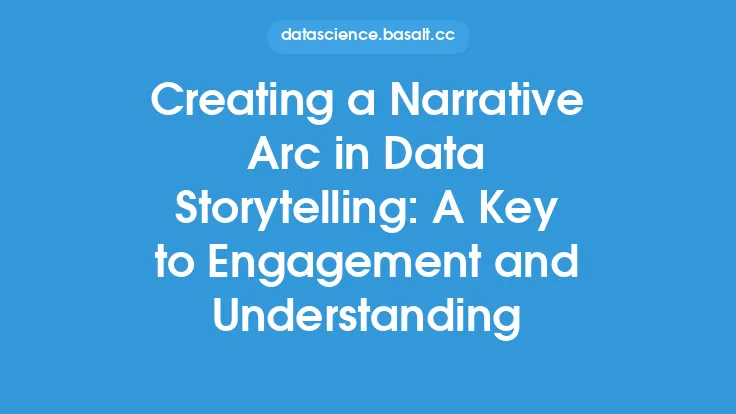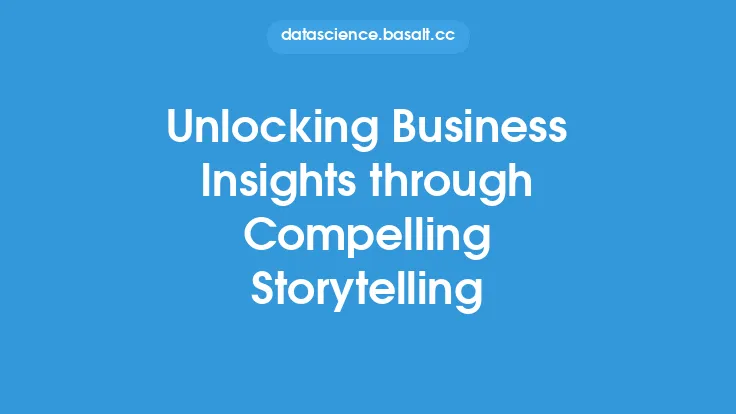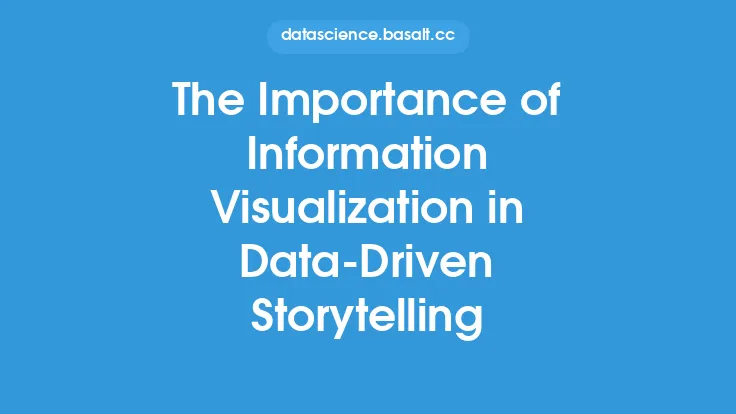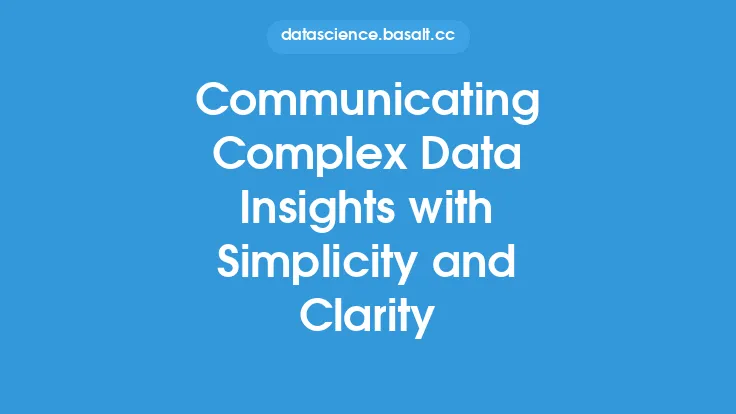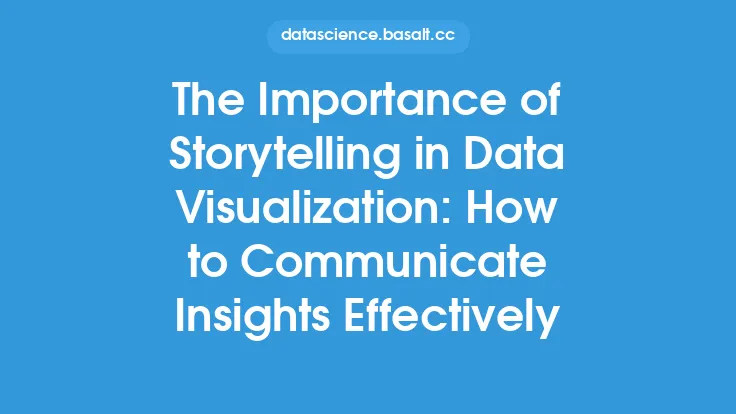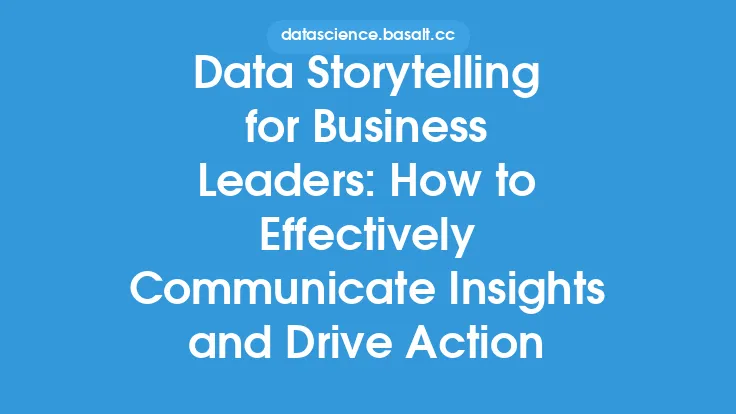Data storytelling is a powerful tool for communicating insights and driving business decisions. However, the sheer volume of data available can be overwhelming, making it challenging to extract meaningful insights and present them in a way that resonates with stakeholders. This is where actionable insights come into play – by leveraging data storytelling, organizations can create a narrative that not only presents data but also provides a clear call to action. In this article, we will delve into the world of data storytelling and explore how to create actionable insights that drive business outcomes.
Introduction to Data Storytelling
Data storytelling is the process of using data to tell a story that informs, engages, and persuades stakeholders. It involves using a combination of data visualization, narrative techniques, and analytical skills to create a compelling narrative that presents insights and recommendations. Effective data storytelling requires a deep understanding of the data, the audience, and the business context. By using data storytelling, organizations can create a shared understanding of the data and its implications, facilitating collaboration and driving business decisions.
The Importance of Actionable Insights
Actionable insights are the backbone of data storytelling. They provide a clear and concise summary of the data, highlighting key trends, patterns, and correlations. Actionable insights are not just about presenting data; they are about providing a clear call to action that drives business outcomes. By creating actionable insights, organizations can ensure that their data storytelling efforts are focused on driving business decisions, rather than just presenting data for its own sake. Actionable insights can be used to identify opportunities, mitigate risks, and optimize business processes, making them a critical component of any data-driven organization.
Best Practices for Creating Actionable Insights
Creating actionable insights requires a combination of technical, business, and storytelling skills. Here are some best practices for creating actionable insights:
- Start with a clear question or hypothesis: Before diving into the data, it's essential to have a clear understanding of what you're trying to achieve. What question are you trying to answer? What hypothesis are you trying to test?
- Use a combination of data sources: Don't rely on a single data source. Use a combination of internal and external data sources to create a comprehensive view of the business.
- Focus on the signal, not the noise: With so much data available, it's easy to get bogged down in the details. Focus on the key trends, patterns, and correlations that drive business outcomes.
- Use data visualization to tell the story: Data visualization is a powerful tool for communicating insights. Use a combination of charts, tables, and graphs to create a narrative that presents the data in a clear and concise manner.
- Provide context and recommendations: Actionable insights are not just about presenting data; they are about providing a clear call to action. Provide context and recommendations that help stakeholders understand what the data means and what they can do about it.
Technical Considerations for Data Storytelling
While data storytelling is often associated with soft skills like communication and narrative techniques, there are also technical considerations that need to be taken into account. Here are some technical considerations for data storytelling:
- Data quality and integrity: Ensuring that the data is accurate, complete, and consistent is critical for creating actionable insights. Use data validation and data cleansing techniques to ensure that the data is reliable.
- Data architecture and infrastructure: A well-designed data architecture and infrastructure are essential for supporting data storytelling. Ensure that the data is properly stored, processed, and retrieved to support data analysis and visualization.
- Data visualization tools and technologies: There are many data visualization tools and technologies available, each with its strengths and weaknesses. Choose the right tool for the job, and ensure that it is properly configured and optimized for performance.
- Statistical and machine learning techniques: Statistical and machine learning techniques can be used to identify patterns and correlations in the data. Use techniques like regression, clustering, and decision trees to create predictive models and identify areas for improvement.
Measuring the Effectiveness of Data Storytelling
Measuring the effectiveness of data storytelling is critical for ensuring that the insights and recommendations presented are driving business outcomes. Here are some metrics for measuring the effectiveness of data storytelling:
- Engagement metrics: Track engagement metrics like page views, click-through rates, and time on page to ensure that the data storytelling efforts are resonating with stakeholders.
- Adoption metrics: Track adoption metrics like the number of users, frequency of use, and depth of use to ensure that the insights and recommendations presented are being adopted by stakeholders.
- Business outcomes: Track business outcomes like revenue growth, customer satisfaction, and process efficiency to ensure that the data storytelling efforts are driving business decisions and outcomes.
- Return on investment (ROI): Track the ROI of data storytelling efforts to ensure that the investment in data storytelling is generating a positive return.
Conclusion
Creating actionable insights through data storytelling is a critical component of any data-driven organization. By leveraging data storytelling, organizations can create a narrative that not only presents data but also provides a clear call to action. By following best practices, considering technical requirements, and measuring effectiveness, organizations can ensure that their data storytelling efforts are driving business outcomes and generating a positive return on investment. Whether you're a data analyst, business leader, or communicator, data storytelling is an essential skill for anyone looking to drive business decisions and outcomes with data.
